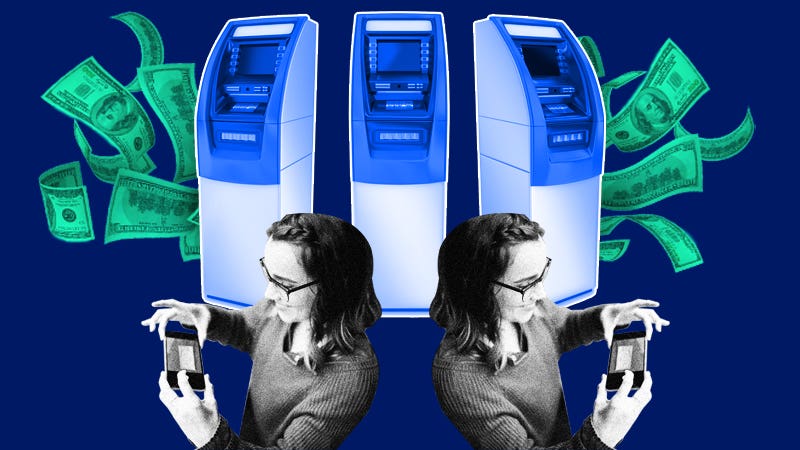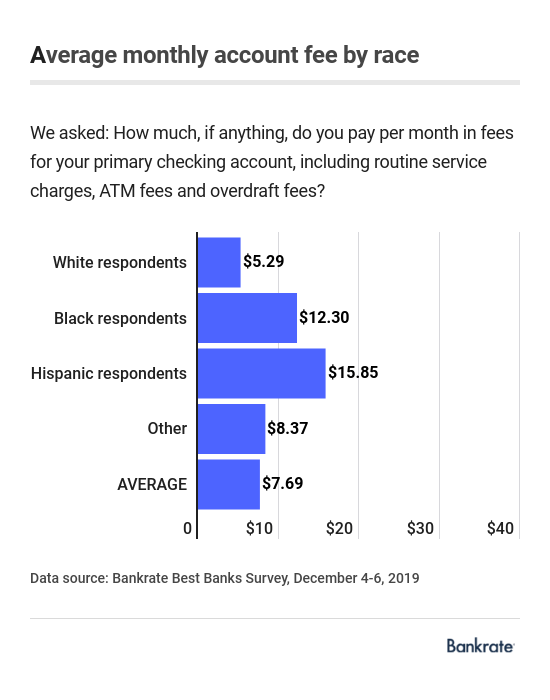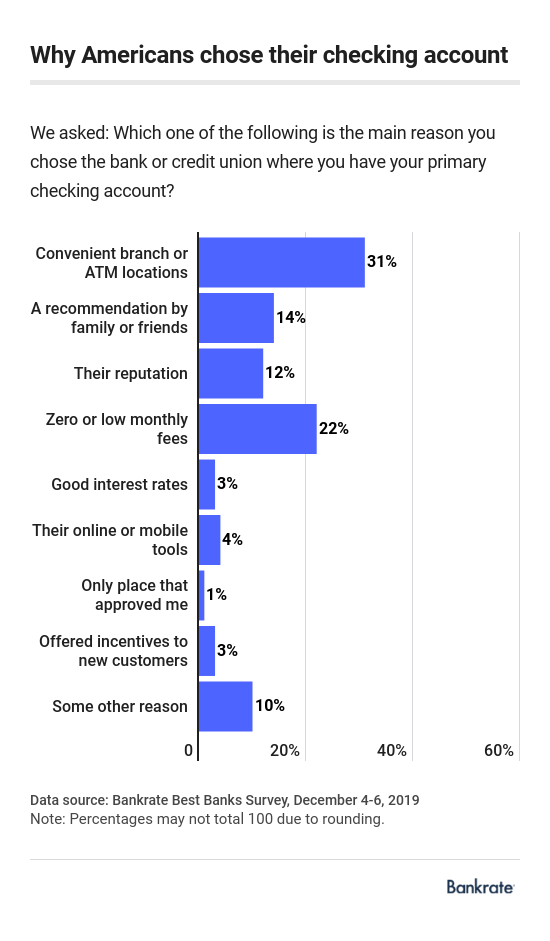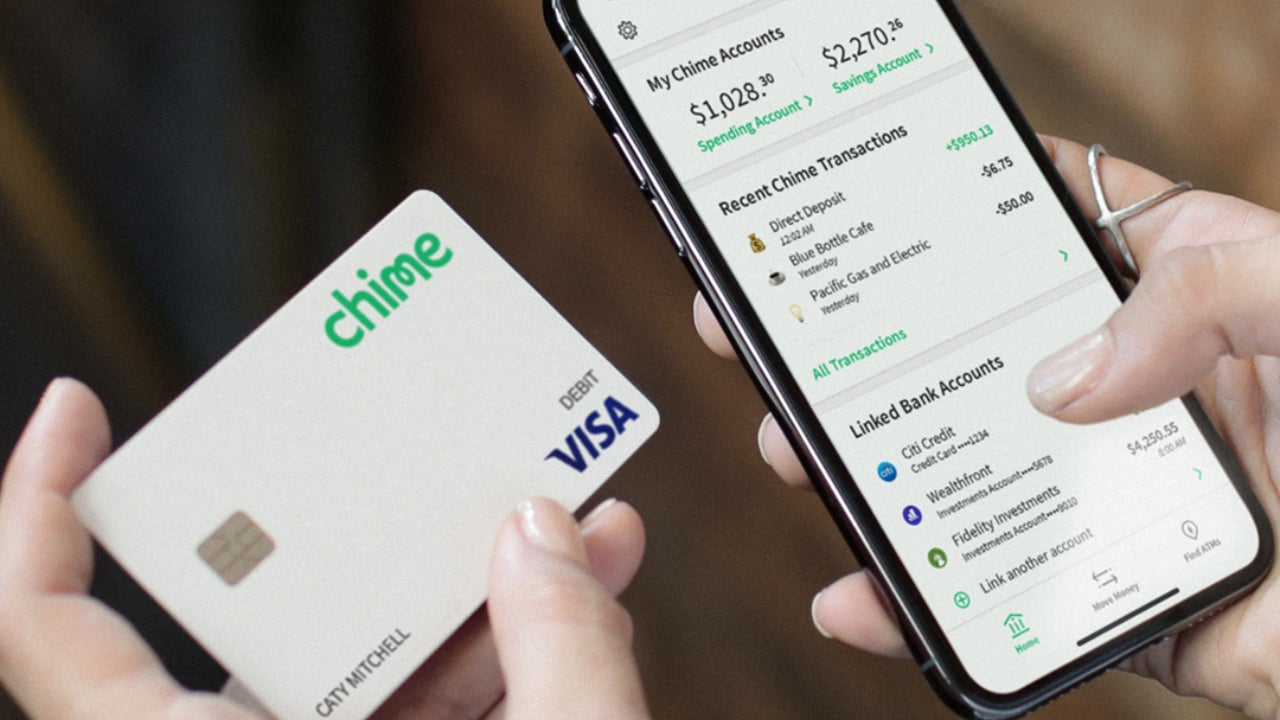Survey: While checking fees vary wildly by race and age, Americans stay loyal to their banks

2019 can go down as the year of some of the hottest brands teasing new checking account options — some offering accounts with few, if any, fees. But Americans, on average, are sticking with their primary checking account provider for years and paying their bank or credit union a monthly toll for storing their money.
The average checking account holder at a bank or credit union pays $7.69 in fees per month, a cost that includes ATM and overdraft fees, as well as routine service charges, according to a new Bankrate survey.
Those averages mask striking differences in these monthly charges based on race and age: Among age groups, millennials reported paying the highest average in total banking fees. Among races, Hispanics reported paying the highest average in total banking fees.
The average U.S. adult says they have used the same primary checking account for just more than 14 years, according to the survey. Even millennials have kept their primary account for nearly a decade, according to the survey.
Breaking it off with your primary bank provider could prove beneficial at a time when there are all kinds of new options to store your money for as long or as little as you wish.
“While the typical customer has held their checking account at the same location for more than 14 years, at least some of these consumers would be wise to survey the landscape for a bank or credit union that might better fit their needs,” says Mark Hamrick, Bankrate’s senior economic analyst. “The draw could be lower monthly fees, more favorable interest rates, better customer service or superior mobile and online tools.”
Key findings:
- The average checking account holder at a bank or credit union pays $7.69 in fees per month — a cost that includes ATM and overdraft fees and routine service charges.
- Fees paid vary by race. Hispanics reported paying the most per month on average in checking account costs ($15.85). Whites reported paying the least per month on average in checking account costs ($5.29).
- Americans are reluctant to quit their bank or credit union. The average tenure for U.S. adults with checking accounts is just over 14 years.
- The hottest attractions for choosing a financial institution are its most traditional channels: Nearly a third of U.S. adults say convenient branches or ATM locations was the main reason they opened their primary checking account with a bank or credit union.
The long-term relationship with our banks
It’s never been hotter for a brand to debut an account to plop in your paychecks.
Over the past 12 months, fintech companies like N26 and Wealthfront have launched alternative options for storing and moving your money while Google announced it intended to offer checking accounts in 2020. It’s even become more fashionable for traditional banks to launch online-only products with quirky names, such as “booyah!”
Yet, most Americans stay committed to their bank or credit union for the long haul.
The average U.S. adult says they have used the same primary checking account for 14.3 years at their current bank or credit union. Most Americans with checking accounts (52 percent) said they have used their primary checking account between zero and 10 years. Twenty-one percent of checking account holders reported having used their account between a whopping 21 and 50 years.
Not surprisingly, older respondents are more likely to have kept the same bank account for longer. Those who are age 75 and older say they’ve been with their bank provider the longest: more than 26 years on average.
But younger adults have held on to their primary checking accounts for years now, too. The average millennial (24- to 39-year-olds) has kept his checking account for just more than nine years.
What’s drawing Americans to a particular bank brand are old-school reasons. Nearly one-third of all U.S. adults (31 percent) said they chose their bank or credit union mainly for its convenient ATM and branch locations, followed by zero or low monthly fees (22 percent), trailed by recommendations from friends or family (14 percent).
While it’s easier to switch bank accounts nowadays, part of the story for staying put is banks improving their service over the years.
“Satisfaction has improved nicely and steadily,” says Paul McAdam, a senior director of banking services at J.D. Power, which regularly surveys consumers about their retail banking experiences. “The key reason why is convenience. It’s just more convenient to access and move their money.”
The new Bankrate survey supports his point. At 28 percent, the most popular reason checking account customers say they stay with their bank or credit union is that they’re happy with the customer service. Attraction to its zero or low fees (19 percent) and convenient branch or ATM locations (15 percent) ranked second and third as reasons why they committed.
For others, however, apathy appears as the basis for why they signed up and are hanging on to their bank accounts. “Merger,” “inertia,” “my parents signed me up as a kid,” were among the written responses to the questions in the survey.
If you fall into this line of thinking, consider breaking through the indifference and look elsewhere: the competition for your cash is fierce and you have all kinds of options that don’t require too much work to make a switch.
To help consumers find the best options, Bankrate has released its Best Banks of 2020.
The winners are:
- Best Big Bank: Capital One Bank
- Best Online Bank: Radius Bank
- Best Credit Union: Alliant Credit Union
- Best Regional Bank: Western State Bank
“Some people tell us that it is too much of a hassle to switch or admit that they haven’t looked around at all,” Hamrick says. “The truth is, it isn’t that difficult or time-consuming to shop around or to move an account.”
Bank fees differ by age, race
Most checking account holders, 73 percent, say they don’t pay monthly fees for their accounts. But the rest say they spend anywhere between $1 and more than $50 — a cost that includes ATM and overdraft fees and routine service charges. Of those checking account holders who pay monthly fees, the average person spends $28.61.
These numbers dramatically vary based on race and age.

More than three-quarters (78 percent) of white respondents report they paid no bank fees in a typical month, compared to 60 percent of blacks and 59 percent of Hispanics. Hispanics with a checking account reported the highest amount in checking account costs per month on average ($15.85). That compares with blacks saying their costs, on average, are $12.30, while whites report the least on average: $5.29.
Millennials are the age group paying the highest in total banking fees of $12.80 a month on average, while the Silent Generation (those 75 and older), on average, pay the least at $1.81 a month. The survey also found that millennials are the most likely (11 percent) to say they hadn’t shopped around for a better place to do their banking, while Gen Zers came in a close second (10 percent) for not seeking out a better option.
The oldest channels remain the most alluring
A bank’s mobile app isn’t just for checking account balances and depositing checks. Nowadays, it can help us send money to a friend or family member, get paid earlier and ease us into a savings habit. Yet, most Americans with checking accounts still find a bank’s most traditional features the most alluring.

Nearly a third of U.S. adults (or 31 percent of respondents) say convenient branches or ATM locations enticed them to open their primary checking account with a bank or credit union, according to the survey. That compares with only 4 percent of consumers citing mobile and online tools as a primary reason for opening or retaining a checking account.
“While banking services reach from brick-and-mortar locations to online, the fact is that convenient branch or ATM locations still hold significant attraction for prospective customers,” Hamrick says. “Many consumers still seek out a physical location where they can conduct banking business, speak to someone or get cash. Surprisingly, only a small percentage cite mobile and online tools as a primary reason for opening or retaining a checking account.”
Arguably more unexpectedly, younger adults were even less primarily drawn to a bank for its digital tools: Only 2 percent of Gen Z members credit mobile and online tools as the main reason they chose their primary financial institution, according to the report.
[READ: Why tech-savvy young adults can’t quit bank branches]
The case for switching your checking account
Checking account fees can quickly add up. The average bank overdraft fee is $33.36, according to Bankrate’s 2019 checking and ATM fee study, and it’s possible to get dinged with several overdraft fees within one day. Moreover, financial institutions have been charging record-high fees when you withdraw money at an ATM not affiliated with your bank.
If you’re paying surprise fees for your checking account, you might want to consider finding a replacement. You have options. The competition for storing your cash is very competitive and there are fee-free checking accounts (meaning they have no monthly service fees or balance requirements). About 4 in 10 non-interest checking accounts (42 percent) are considered free, the highest percentage since 2011, according to the 2019 checking study. However, you could still pay for other fees in using these accounts, including overdraft fees.
But you have other options. You can find checking accounts that won’t let you spend more than what’s in them. There are also digital tools that help you get bank fees refunded. There are even accounts that let you spend more than what’s in them — and they don’t charge you for making your balance dip below zero.
Bankrate also released a list of best banks for checking and savings accounts as part of its Best Banks research to help consumers choose a bank that best fits their needs.
The winners are:
- Best Bank for Checking Accounts: Radius Bank
- Best Bank for Savings Accounts: BrioDirect, a division of Sterling National Bank
Other common reasons to consider switching providers include: a life-changing event like a marriage, if your mobile app lacks features or receiving subpar service from your bank or credit union. “There are so many other options in the marketplace,” McAdam says.
While some Americans told Bankrate it would be a hassle to switch, it’s never been easier to make a change. These days, you can open a checking account within minutes from your phone or laptop if all goes right.
“The opening process isn’t so hard,” McAdam says. “Activating the app, activating the debit card, etc. It’s all fairly easy.”
As he sees it, the real work is still tied to switching the payments going in and out of your primary account — that takes time if you have a lot of payments to adjust. The good news is that some accounts have also made this step easier by prompting new customers to switch their automatic bill payments — visuals included.
Tips on how to change banks
Shop around: It’s easy to compare rates online, get information about mobile banking apps and read bank reviews. Explore Bankrate’s best banks in 2020, too.
Look for a sign-up bonus: Competition for your cash is intense, and you can find banks offering a couple hundred dollars just to win your business. Expect to have to make a direct deposit or keep a certain balance in order to earn the bonus, however.
Consider paying for value-added services: Fee-free checking accounts can easily be an illusion if you overdraw your account and end up paying the bank or credit union steep overdraft fees. You may want to consider signing up for an account that won’t let you overdraft. Some of these accounts will charge you, but you will know the price instead of getting a surprise.
Keep your old checking account and get another one: Unless you’re paying fees, there is no major reason you shouldn’t use multiple checking accounts. Consider opening another account to get a specific perk while keeping your old one. According to research by Cornerstone Advisors, consumers choose a digital bank to get: better financial management tools, debit card rewards or higher rates. In other words: scatter your money in a main account, on Venmo and at a challenger bank that solves a specific problem if it appeals. Checking accounts, after all, are designed for money to come and go.
“It’s really more and more the case where people will have a couple of different transactional accounts that they interact with,” McAdam days.
Connect your checking account to a more modern app: You can also keep your existing checking account and plug it into another mobile app to get something you want, like an easier-to-use app or a feature that helps you pay down debt. However, read the terms and conditions first. Make sure you understand any fees charged or what data you might be sharing.
Methodology
Bankrate commissioned YouGov Plc to conduct the survey. All figures, unless otherwise stated, are from YouGov Plc. Total sample size was 2,634 adults, including 2,285 who have a checking account with a bank or credit union. Fieldwork was undertaken on Dec. 4-6, 2019. The survey was carried out online and meets rigorous quality standards. It employed a non-probability-based sample using both quotas upfront during collection and then a weighting scheme on the back end designed and proven to provide nationally representative results.






